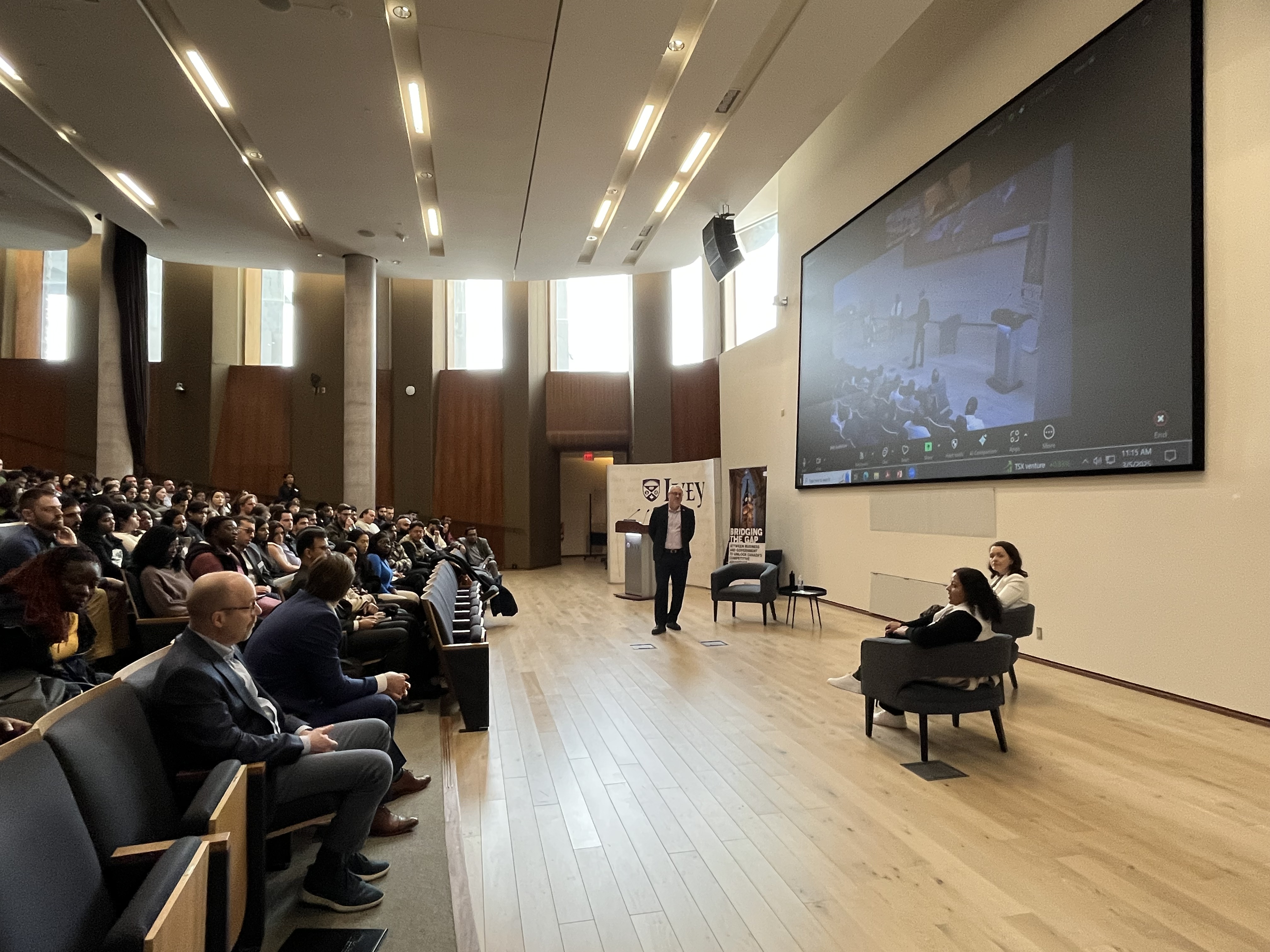As global demand for electric vehicles (EVs) accelerates and North American policies continue to evolve, Canada stands at a pivotal moment. With its abundant critical minerals, expanding battery production capacity, and expertise in advanced vehicle manufacturing, the country is uniquely positioned to lead the global EV value chain. However, looming tariff threats from the new U.S. administration cast uncertainty over the future of the North American auto industry—just as it undergoes a major transition to EVs.
To explore the complex challenges associated with this transition, more than 180 MBA, PhD, and HBA students joined policy and industry leaders at the 2025 Ivey Idea Forum. Organized by the Lawrence National Centre for Policy and Management, the workshop began with an examination of the EV transition as a systemic challenge—one that demands coordinated efforts across all levels of government and industries, from mining and manufacturing to utilities and infrastructure development. Professors Romel Mostafa, Robert Klassen, and Scott Loveland led the session, drawing insights from Norway’s EV experience. As part of their preparation, students reviewed an upcoming Lawrence National Centre policy brief, which provided a comparative perspective on how different nations, including Canada, might navigate similar transitions while accounting for unique socioeconomic and policy landscapes.
A key highlight of the Idea Forum was a panel discussion on how shifting geopolitical and economic trends are shaping EV production and adoption. While global demand, technological advances, and positive user experience are driving adoption, Canada’s fragmented policies and charging infrastructure point to a need for long-term investment, a shift toward everyday charging habits, and stronger regulation to address digital and environmental challenges.
In the final session, students tackled the challenge of developing EV charging infrastructure, which is widely recognized as essential for accelerating EV adoption—and, in turn, driving regional EV production. This hands-on case discussion focused on the economics of Ontario’s EV supercharging network on major highways, examining market failures, policy interventions, and financing models for infrastructure investment. Students debated strategies on how different incentive structures, such as government-backed loans, targeted grants and s carbon credits, could shape the deployment of chargers and adoption of EVs.

Insights from the Panel Discussion
Held under Chatham House Rule to foster open dialogue, the session was moderated by Professor Gal Raz, the panel featured leading voices across the EV ecosystem: Rachel Doran (Vice President of Policy and Strategy, Clean Energy Canada), Carter Li (CEO, SWTCH Energy), and Raseeka Rahmatullah (Manager, Government and Regulatory Affairs, Volkswagen Group Canada Inc.).
The discussion explored how surging EV demand, particularly in China, is shaping domestic expectations and increasing competitive pressure worldwide. By contrast, the policy landscape in North America remains fragmented. In Canada, federal EV rebate funds have run out, and changes to provincial programs have created uncertainty around long-term support. South of the border, shifting political winds in the U.S. have added volatility, affecting both consumer confidence and industry planning.
Despite these challenges, several tailwinds are driving global adoption. Continued advancements in EV technology, the arrival of more affordable models, and increasing investment from manufacturers are paving the way for broader adoption. Importantly, experience matters: 87% of current EV drivers say they would buy one again, showing that many concerns, like range anxiety, diminish with use.
A key insight from this session was that EV adoption is as much about charging experience as it is about vehicles. Charging is most often done at home, yet access is uneven. There needs to be a shift in mindset: charging should be seen less like refuelling at gas stations and more like recharging a smartphone—plugged in overnight and ready in the morning. This framing supports a strategy focused on slower, cost-effective charging where vehicles dwell for extended periods (such as at home or work), paired with high-speed charging along major travel corridors.
As Canada builds out its EV ecosystem, broader sustainability and security issues loom large. EVs are becoming part of a wider digital transformation. This shift not only transforms customer relationships but also introduces new risks that must be managed through thoughtful regulation and public education. These include concerns about the environmental impact of battery mineral sourcing, end-of-life recycling, and the emerging cybersecurity needs of connected vehicles and smart charging infrastructure. Predictable, long-term support for infrastructure investment was seen as more impactful than vehicle purchase rebates. Some observers noted that shifting government funding toward building upgrades and charger installation could unlock faster, more equitable adoption.
Looking into the Future
Amid intensifying global competition, shifting supply chains, and mounting climate pressures, Canada faces both opportunities and challenges in leading the EV sector. Navigating these dynamics is especially critical for Ontario, which accounts for over 90% of Canada’s auto manufacturing and is home to a highly specialized, export-driven industry. Recent developments, such as newly announced tariffs between the U.S. and Canada, underscore the volatility of geopolitical pressures on trade.
The key takeaway was clear: North America’s EV future hinges on a strong and resilient ecosystem. This requires stable, forward-thinking policies, cross-sector coordination, and well-informed consumers. Most importantly, it demands a predictable geopolitical framework that ensures seamless trade within the region—allowing Canada, the U.S., and Mexico to maximize their respective strengths and natural advantages in the evolving EV landscape.
This event was made possible with the generous support of Ivey’s Critical Issues Challenges Fund.
